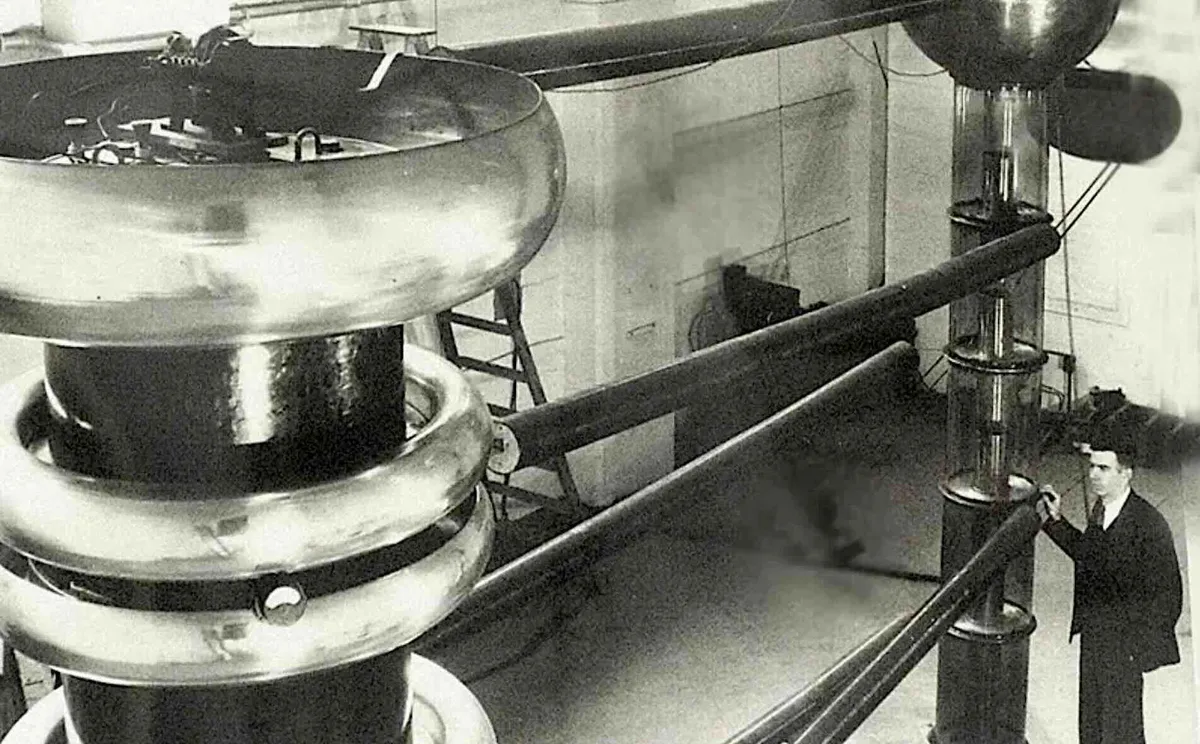
In 1938, a groundbreaking experiment conducted by University of Michigan physicist Arthur Ruhlig resulted in the first recorded observation of deuterium-tritium (DT) fusion. This significant discovery was initially documented in a letter to the editor published in Physical Review, where Ruhlig described it as a gamma-ray experiment. Despite its importance, Ruhlig's findings were largely overlooked at the time, relegating this monumental achievement to a mere anecdote in the vast history of science. However, recent efforts by a collaborative team from Los Alamos National Laboratory and Duke University have resurrected and replicated this forgotten experiment, highlighting its foundational role in the field of nuclear physics.
Today, the DT fusion reaction holds critical significance in the development of fusion energy technologies and plays a pivotal role in modern nuclear deterrence. Despite this, the origins of the first evidence of this reaction remained unclear for decades. This mystery captured the attention of Los Alamos physicists Mark Chadwick and Mark Paris, who, in 2023, began exploring the early history of nuclear fusion. While examining historical milestones, including physicist Emil Konopinski’s 1942 endorsement of DT fusion at a conference led by J. Robert Oppenheimer, they pondered the source of Konopinski’s insightful understanding of DT fusion's potential applications.
Chadwick and his colleagues conducted a thorough investigation, which eventually led them to the National Security Research Center archives. During a late-night search, they unearthed a valuable clue: a 1986 audio recording in which Konopinski expressed his interest in DT fusion stemming from "pre-war" research. In the recording, he noted, “I happened to know from pre-war work that the reaction of deuterium with hydrogen-3 produces much more energy and has a larger cross-section, so to speak.” This recollection prompted the team to trace back to Ruhlig’s 1938 letter, where he discussed his findings related to high-energy proton emissions from deuterium bombardment.
After establishing the connection between Konopinski and Ruhlig, the next logical step for Chadwick and Paris was to replicate the original 1938 experiment. To facilitate this, they sought the support of Los Alamos Lab Director Thom Mason, who encouraged them to utilize modern physical hardware rather than relying solely on theoretical simulations. This collaboration with Duke University physicists took place at the Triangle Universities Nuclear Laboratory in North Carolina, where they successfully recreated Ruhlig’s setup using advanced equipment.
The team employed a 3.5-mm deuteron beam from the laboratory’s Tandem accelerator, directed at a deuterated phosphoric acid target, emulating the original experiment's conditions. To replicate the environment of Ruhlig's experiment, they included a cobalt-alloy foil and a liquid scintillator neutron detector, which enabled them to track neutron emissions from secondary DT fusion reactions.
The outcome of the modern replication confirmed that secondary DT reactions indeed occur under the experimental conditions set by the team. However, they noted that Ruhlig may have overestimated the frequency of these reactions. Despite this discrepancy, their findings affirmed Ruhlig’s assertion that DT fusion was “exceedingly probable.” Chadwick remarked, “Regardless of the inconsistency of Ruhlig’s rate of fusion against our modern understanding, our replication leaves no doubt that he was at least qualitatively correct when he said that DT fusion was ‘exceedingly probable.’”
In a fitting tribute to Arthur Ruhlig's pioneering work, the research team published their findings in Physical Review, the same journal that first printed Ruhlig’s 1938 letter, after 87 years. The paper titled “Modern version of the uncited 1938 experiment that first observed DT fusion” was published on June 20, 2025, alongside two supplemental papers focusing on the historical context of DT fusion and its relevance to modern applications.
In conclusion, the rediscovery and replication of Arthur Ruhlig’s experiment not only shed light on an overlooked chapter in fusion research but also reinforced the significance of DT fusion in contemporary nuclear physics. This remarkable journey serves as a reminder of the interconnectedness of scientific discovery and the importance of revisiting history to honor those who contributed to our understanding of the universe.